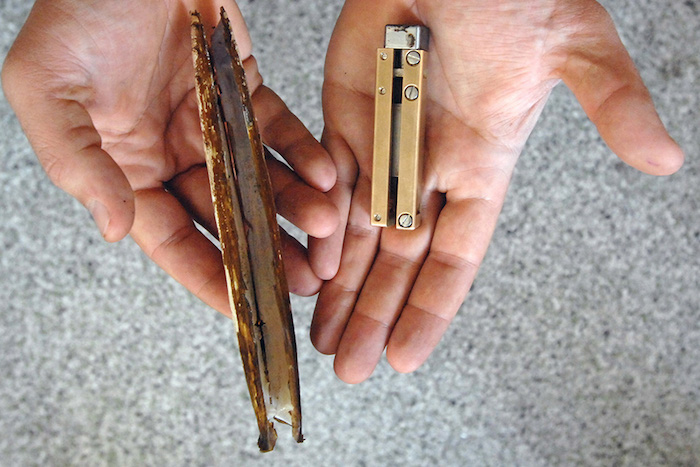RoboClam mimics Atlantic razor clam to dig undersea soil at high speed
RoboClam, the new robot developed by MIT professor Amos Winter can mimic the Atlantic razor clam to rapidly dig undersea soil at very high speed while using very minimum energy. Detailed study of how the animal burrows itself in the soil led to creation of RoboClam. Prof. Winter says that his machine can quickly burrow itself into ground and can be super useful in destroying underwater mines. The Atlantic razor clam (aka Wiki: <a href="https://en.wikipedia.org/wiki/Atlantic_jackknife_clam" target="_blank" rel="noopener noreferrer">Atlantic Jackknife Clam</a>) has incredible abilities. It can dig into the soil at the speed of about 1 cm per second and can move about 0.5 Km utilising energy equal to that stored in a AA sized battery.
The trick clam performs is to move its shells in a typical way to liquify the soil around its body. This drastically reduces the drag on the body allowing it to move faster. The overall effect is that the energy loss is minimal. It first retracts its outer shell, causing the local soil to collapse. Once localised landslide is created around the body, the clam sucks water into the region of falling soil. When water and sand particles mix, they create quicksand. The timing of the whole trick is very important. It must maintain a rhythm to keep going.

Photo Credit: DONNA COVENEY
Developing a robot that can mimic this trick was challenging. Winter and his team had to develop special mechanical shell to mimic the movement of the clam. They used compressed air system for the movement of the shells and achieved promising results. Their current goal is to develop a fully electronic system so that the RoboClam can make its own moves under water.
RoboClam can help not only in destroying underwater mines but also in laying underwater cables. The ships that carry the cables are unable to operate at depths when the depth is <10 meters. In such cases, human divers have to do the cable laying manually. Winter says his robot can do this task without much efforts. Read more about the RoboClam on the source link below.
Source: #-Link-Snipped-#
The trick clam performs is to move its shells in a typical way to liquify the soil around its body. This drastically reduces the drag on the body allowing it to move faster. The overall effect is that the energy loss is minimal. It first retracts its outer shell, causing the local soil to collapse. Once localised landslide is created around the body, the clam sucks water into the region of falling soil. When water and sand particles mix, they create quicksand. The timing of the whole trick is very important. It must maintain a rhythm to keep going.

Photo Credit: DONNA COVENEY
Developing a robot that can mimic this trick was challenging. Winter and his team had to develop special mechanical shell to mimic the movement of the clam. They used compressed air system for the movement of the shells and achieved promising results. Their current goal is to develop a fully electronic system so that the RoboClam can make its own moves under water.
RoboClam can help not only in destroying underwater mines but also in laying underwater cables. The ships that carry the cables are unable to operate at depths when the depth is <10 meters. In such cases, human divers have to do the cable laying manually. Winter says his robot can do this task without much efforts. Read more about the RoboClam on the source link below.
Source: #-Link-Snipped-#
0
